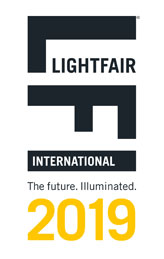LED lighting to improve the level of heat recommendations
LED lighting reliability (life) depends largely on the cooling level, so improve the cooling level is one of the key technologies. Mainly to solve the chip to produce excess heat through the heat sink, heat spread out, this is a very complex technical problems.
LED lighting power, which need to consider the issue of LED cooling, power LED need to heat. Power LED is the operating current of 100mA or more of the light-emitting diodes. Is the standard of the United States in line with the definition of the United States ASSIST Union, according to the existing two kinds of LED forward voltage typical 2.1V and 3.3V, the input power of 210mw and 330mw above the LED are power LED, need to consider the device thermal Problem, some people may have different views, but the practice has proved that to improve the reliability of power LED (life), we must consider the power LED heat dissipation.
Thermal parameters and LED cooling on the main parameters of thermal resistance, junction temperature and temperature rise.
Thermal resistance is the difference between the effective temperature of the device and the externally defined reference point temperature divided by the steady state power dissipation in the device. It is the most important parameter that indicates the degree of heat dissipation of the device. At present, better thermal power LED thermal resistance ≤ 10 ℃ / W, the best reported in the domestic thermal resistance ≤ 5 ℃ / W, foreign reachable thermal resistance ≤ 3 ℃ / W, such as to ensure that this level of power LED life .
The junction temperature is the temperature of the semiconductor junction of the main heat-generating portion of the LED device. It reflects the LED device in the working conditions, can withstand the temperature value. To this end the United States SSL plan to develop to improve heat resistance goals. Chip and the heat resistance of the phosphor is still very high, and now has reached the chip junction temperature of 150 ℃, the phosphor at 130 ℃, the basic life of the device will not have any effect. Indicating that the higher the heat resistance of the chip phosphor, the lower the cooling requirements.
Temperature rise There are several different temperature rise, we are here to discuss: the shell - the ambient temperature rise. It refers to the LED device tube (LED lamps can be measured to the most hot spots) temperature and the environment (in the light emitting plane, 0.5 meters away from the lamp) temperature difference. It is a direct measurement of the temperature value, and can directly reflect the LED device external cooling, practice has proved that the ambient temperature is 30 ℃, if the measured LED tube shell is 60 ℃, the temperature should be 30 ℃ , At this time can basically ensure the life value of LED devices, such as temperature rise is too high, LED light source maintenance rate will be greatly reduced.
LED lighting cooling problem:
With the development of LED lighting products, there are two new technologies: First, in order to increase the luminous flux of a single tube, into a greater current density, as mentioned below, resulting in more heat chips need to heat. Second, the new structure of the package, with the LED light source power increases, the need for multiple power LED chip set packaging together, such as COB structure, modular lighting, will produce more heat, the need for more effective thermal structure and Measures, which gave heat to put forward new issues, otherwise it will greatly affect the performance of LED lamps and life.
At present, LED lamp cooling only 50% of the total performance, there are a lot of electricity to become hot. Secondly, LED high current density and modular lamps and so will have more concentrated heat, need a good heat.
To improve the cooling level, we provide the following recommendations:
1), from the LED chip, it is necessary to take a new structure, new technology to improve the heat resistance of LED chip junction temperature, and other materials, heat resistance, making the cooling conditions to reduce.
2), to reduce the thermal resistance of LED devices, the use of new packaging structure, new technology, the choice of thermal conductivity, heat resistance is better new materials, including metal bonding materials, phosphor mixed plastic, making thermal resistance ≤ 10 ° C / W or lower.
3), reduce the temperature, as far as possible the use of good thermal conductivity of the thermal material, in the design requires a better ventilation channel, so that waste heat dissipated as soon as possible, requiring temperature should be less than 30 ℃. In addition, to improve the cooling level of modular lamps should be mentioned on the agenda.
4), heat a lot of ways, such as the use of heat pipes, of course, very good, but to consider the cost factors, the design should be considered cost-effective.
In addition, LED lighting design in addition to improving the efficiency of lamps, with light requirements, beautiful appearance, to improve the cooling level, the use of good thermal conductivity materials, there are reports that the heat body coated with some nano-materials, the thermal conductivity increased by 30 / RTI & gt; In addition, there must be better mechanical properties and sealing, heat dissipation but also dust, the temperature of LED lamps should be small 30 ℃.
